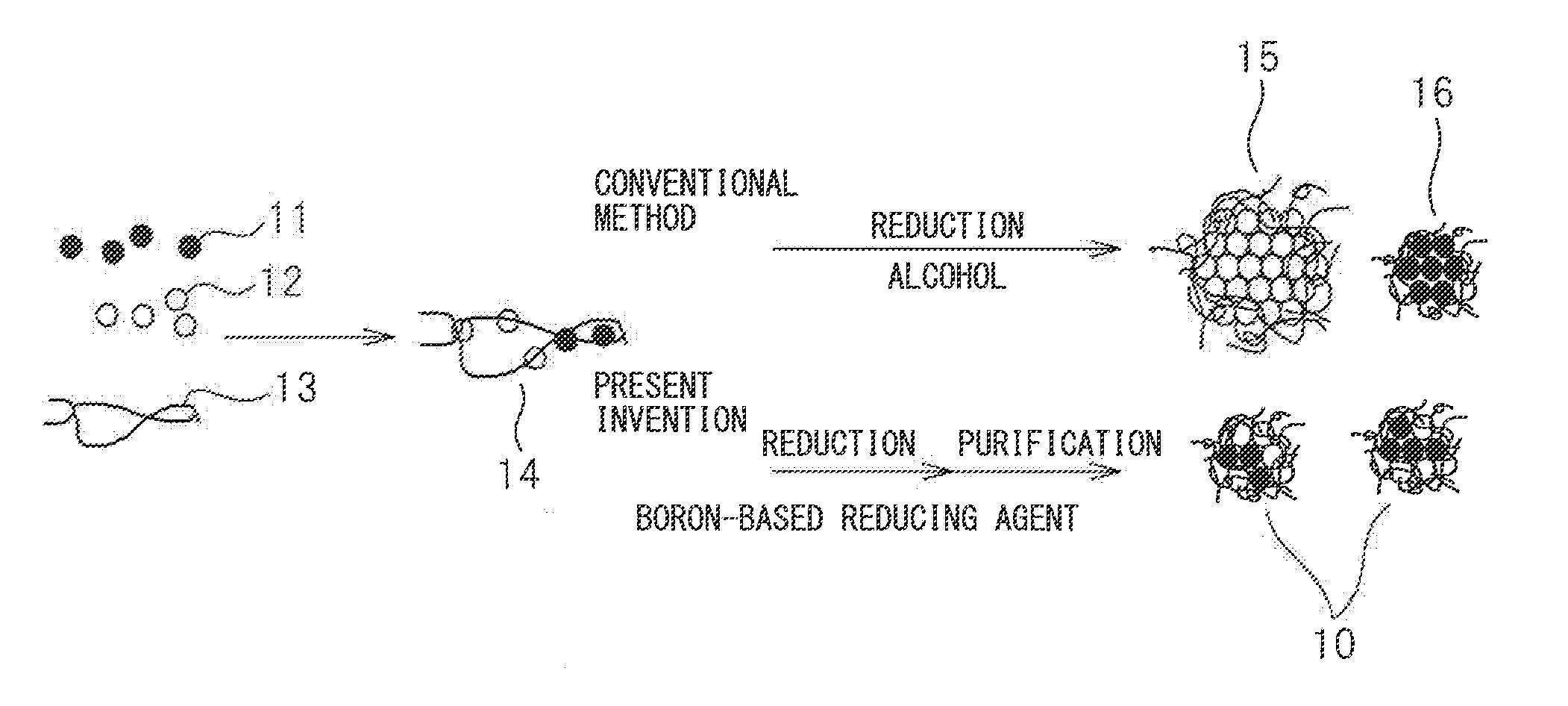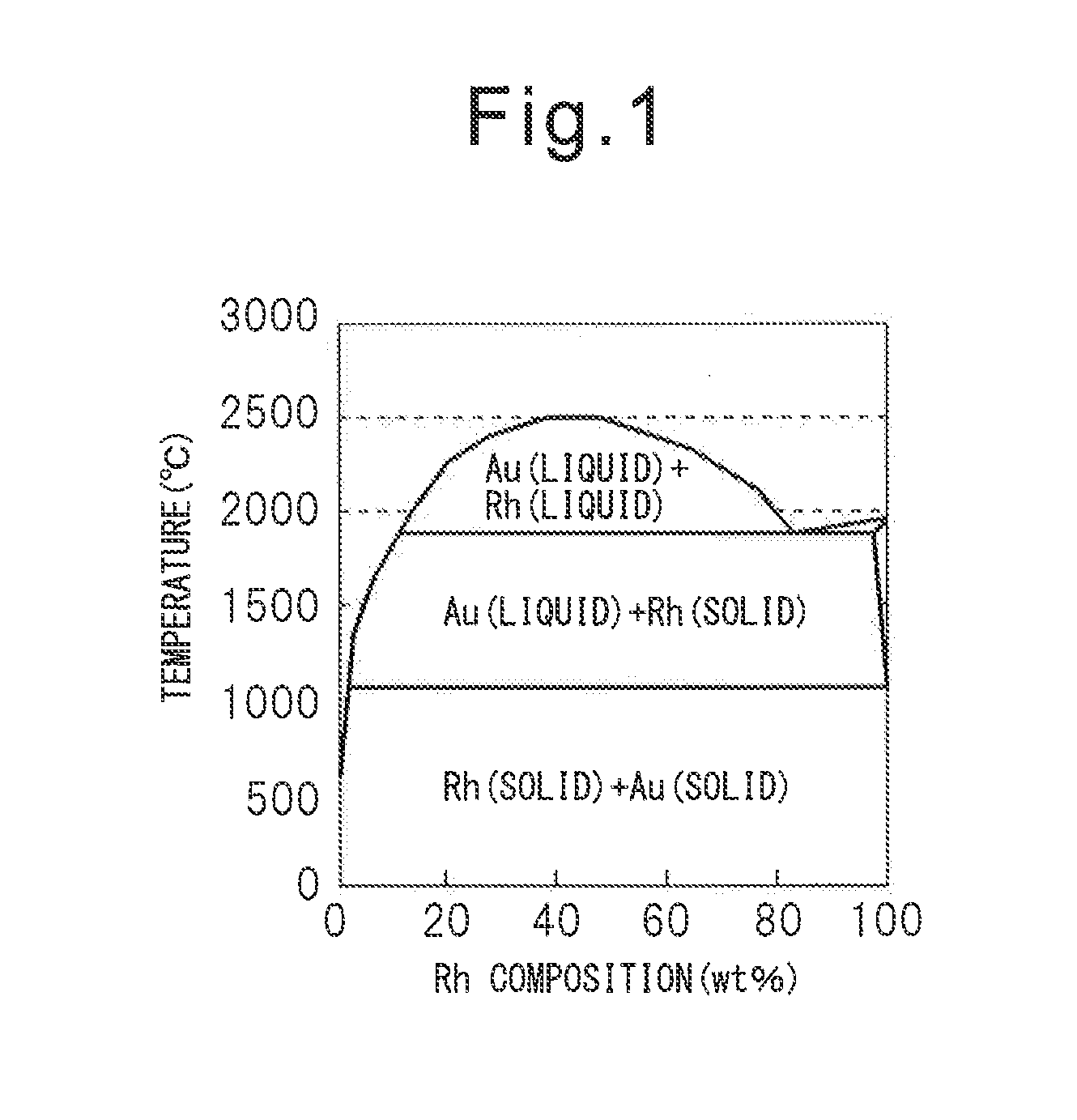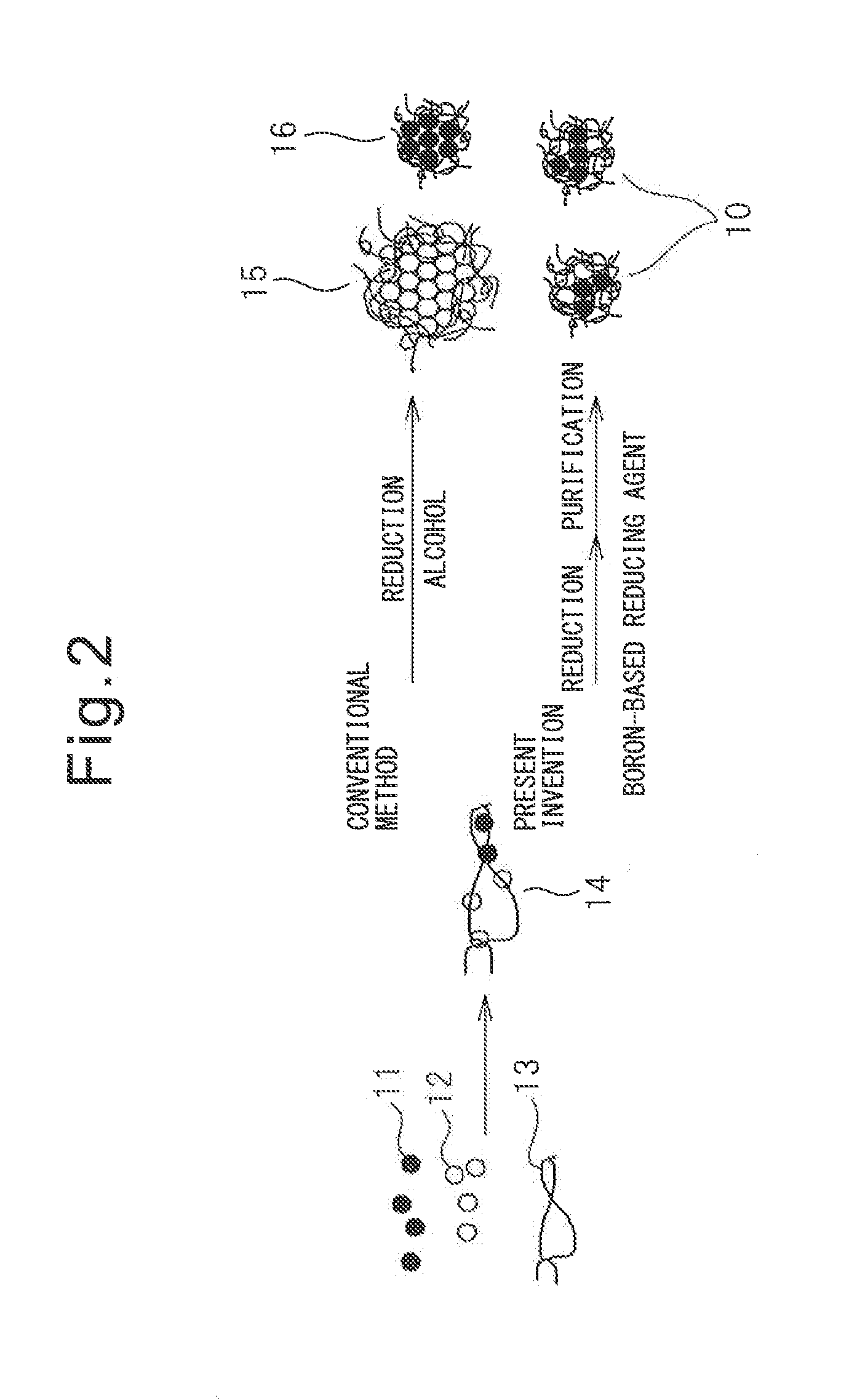Metal particles, exhaust gas purifying catalyst comprising metal particles, and methods for producing them
a technology of exhaust gas purification and metal particles, which is applied in the direction of metal/metal-oxide/metal-hydroxide catalysts, physical/chemical process catalysts, and separation processes, etc., can solve the problems of difficult to produce a solid solution of rhodium and gold in the methods described in these patent documents
- Summary
- Abstract
- Description
- Claims
- Application Information
AI Technical Summary
Benefits of technology
Problems solved by technology
Method used
Image
Examples
example 1
Synthesis of Rh—Au Metal Particles Having a Rh Content of 50 Atomic %
[0076]First, 60.0 mmol of polyvinyl pyrrolidone (PVP K-25, an average molecular weight of 35000) as a protecting agent was introduced into a 500 mL separable flask, and the polyvinyl pyrrolidone was completely dissolved in 200 mL of ion-exchanged water. Then, 0.75 mmol of chlorauric acid (HAuCl4) as a gold salt, 0.75 mmol of rhodium chloride (RhCl3) as a rhodium salt and 50 mL of ion-exchanged water were added to the obtained solution. While stirring the obtained mixed solution at room temperature, 9.0 mmol of ammonia borane (NH3BH) as a boron-based reducing agent dissolved in 50 mL of ion-exchanged water was added to the above mixed solution in portions. After adding, stirring was continued for further 10 minutes, and the obtained solution was transferred to a 2 L beaker. Then, 1200 mL of acetone was added thereto and left to stand for 6 hours to allow the product to settle spontaneously. The colorless and transpa...
example 2
Synthesis of Rh—Au Metal Particles Having a Rh Content of 70 Atomic %
[0077]A solution containing metal particles (Rh content: 70 atomic %) comprising Rh and Au was obtained in the same manner as in Example 1, except for using 0.45 mmol of chlorauric acid (HAuCl4) and 1.05 mmol of rhodium chloride (RhCl3).
example 3
Synthesis of Rh—Au Metal Particles Having a Rh Content of 97 Atomic %
[0099]First, 2.2 g (20.0 mmol) of polyvinyl pyrrolidone (PVP K-25, an average molecular weight of 35000) as a protecting agent was introduced into a 500 mL separable flask, and the polyvinyl pyrrolidone was completely dissolved in 280 mL of distilled water and was stirred at room temperature (solution 1). Next, 0.0097 g (0.015 mmol) of a chlorauric acid (HiAuCl4) aqueous solution (gold content: 30.552 wt %) as a gold salt and 1.058 g (0.485 mmol) of a rhodium chloride (RhCl3) aqueous solution (rhodium content: 4.717 wt %) as a rhodium salt were dissolved in and mixed with 20 mL of distilled water (solution 2). Then, this solution 2 was added to the above solution 1 in the 500 mL separable flask. The obtained mixed solution was maintained at 30° C. (room temperature) using an oil bath, and was bubbled with nitrogen to create a condition under which rhodium and gold can be easily reduced. Then, 40.0567 g (1.5 mmol) o...
PUM
| Property | Measurement | Unit |
|---|---|---|
| Angle | aaaaa | aaaaa |
| Percent by atom | aaaaa | aaaaa |
| Percent by atom | aaaaa | aaaaa |
Abstract
Description
Claims
Application Information
 Login to View More
Login to View More - R&D
- Intellectual Property
- Life Sciences
- Materials
- Tech Scout
- Unparalleled Data Quality
- Higher Quality Content
- 60% Fewer Hallucinations
Browse by: Latest US Patents, China's latest patents, Technical Efficacy Thesaurus, Application Domain, Technology Topic, Popular Technical Reports.
© 2025 PatSnap. All rights reserved.Legal|Privacy policy|Modern Slavery Act Transparency Statement|Sitemap|About US| Contact US: help@patsnap.com



